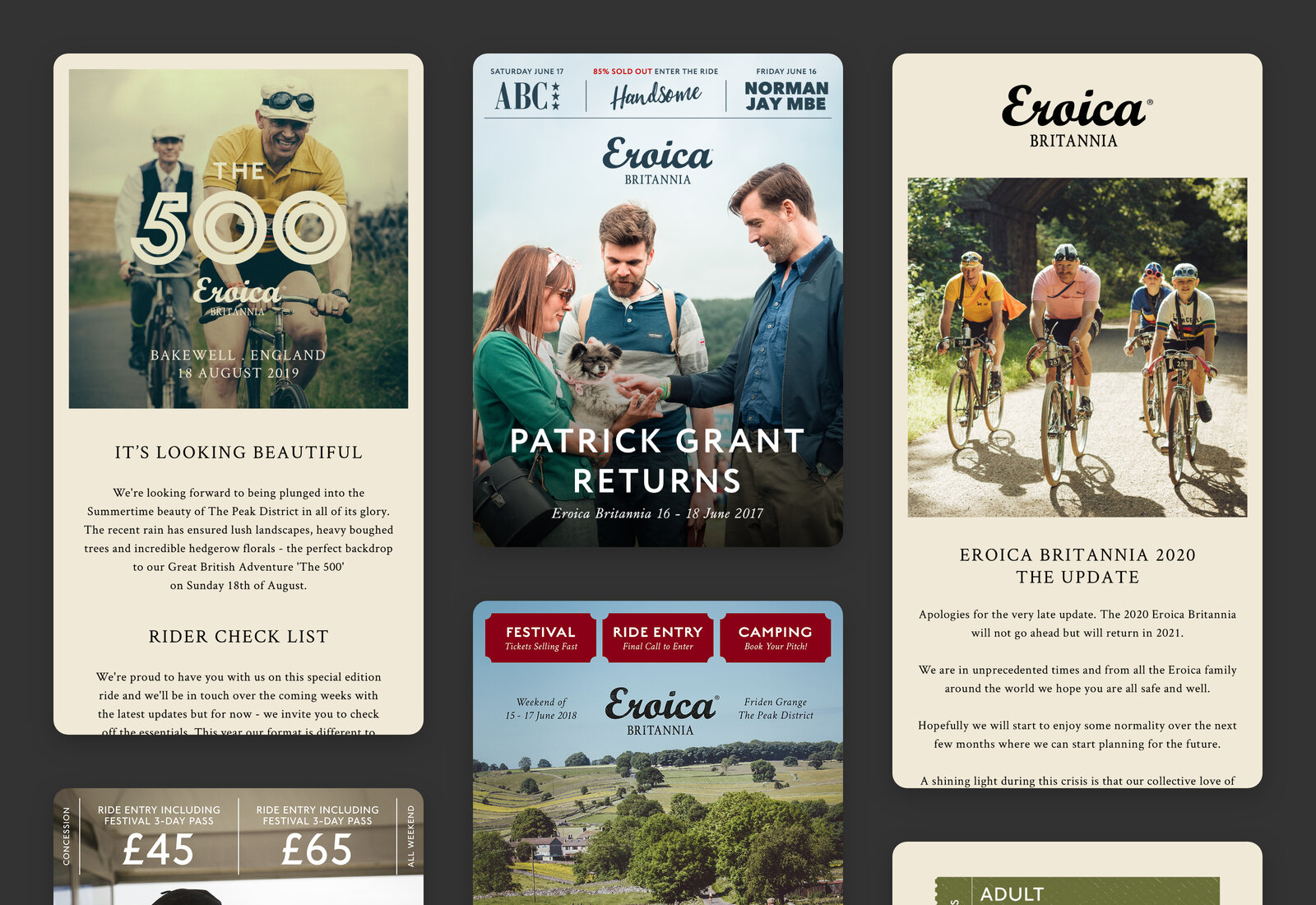
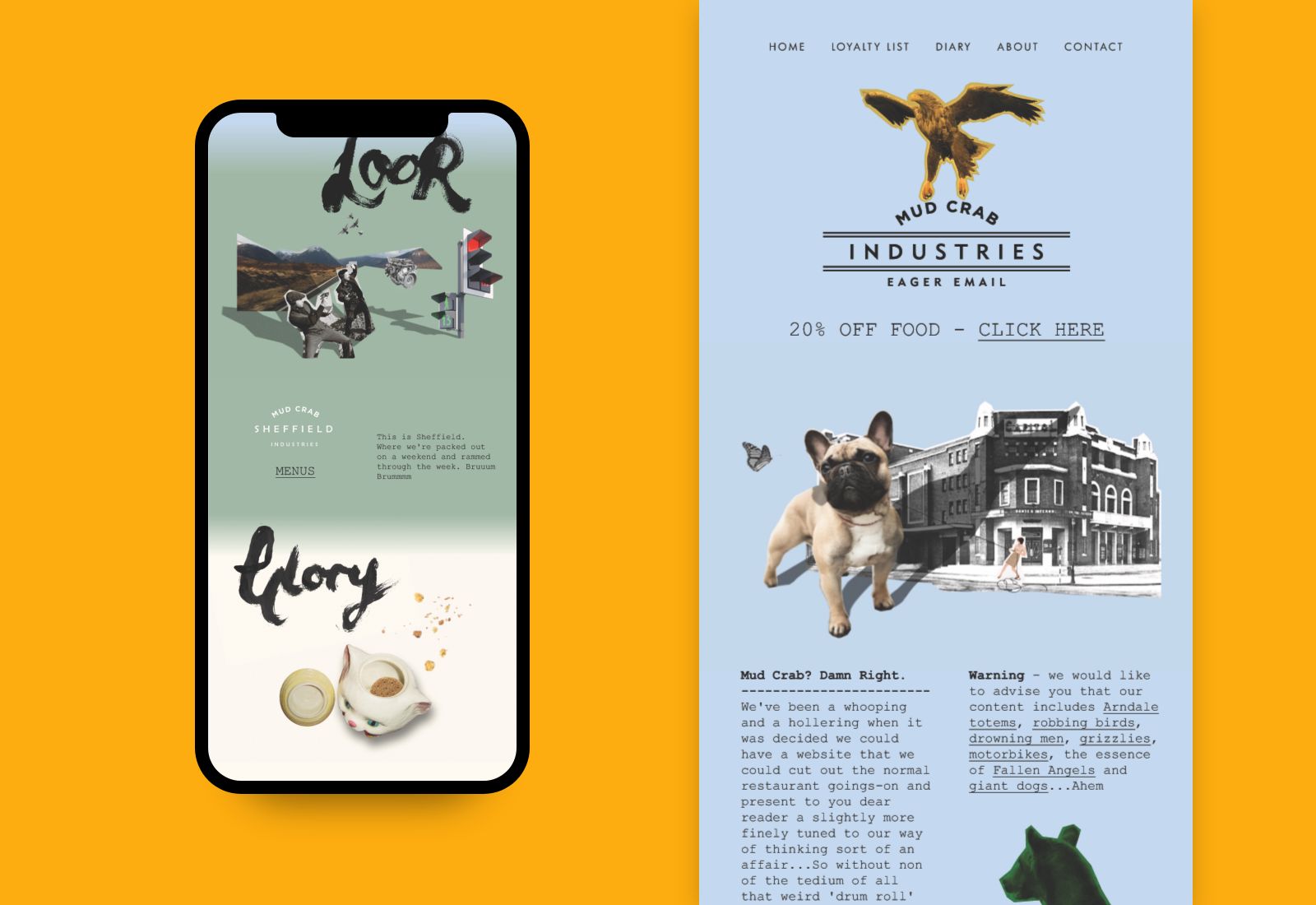
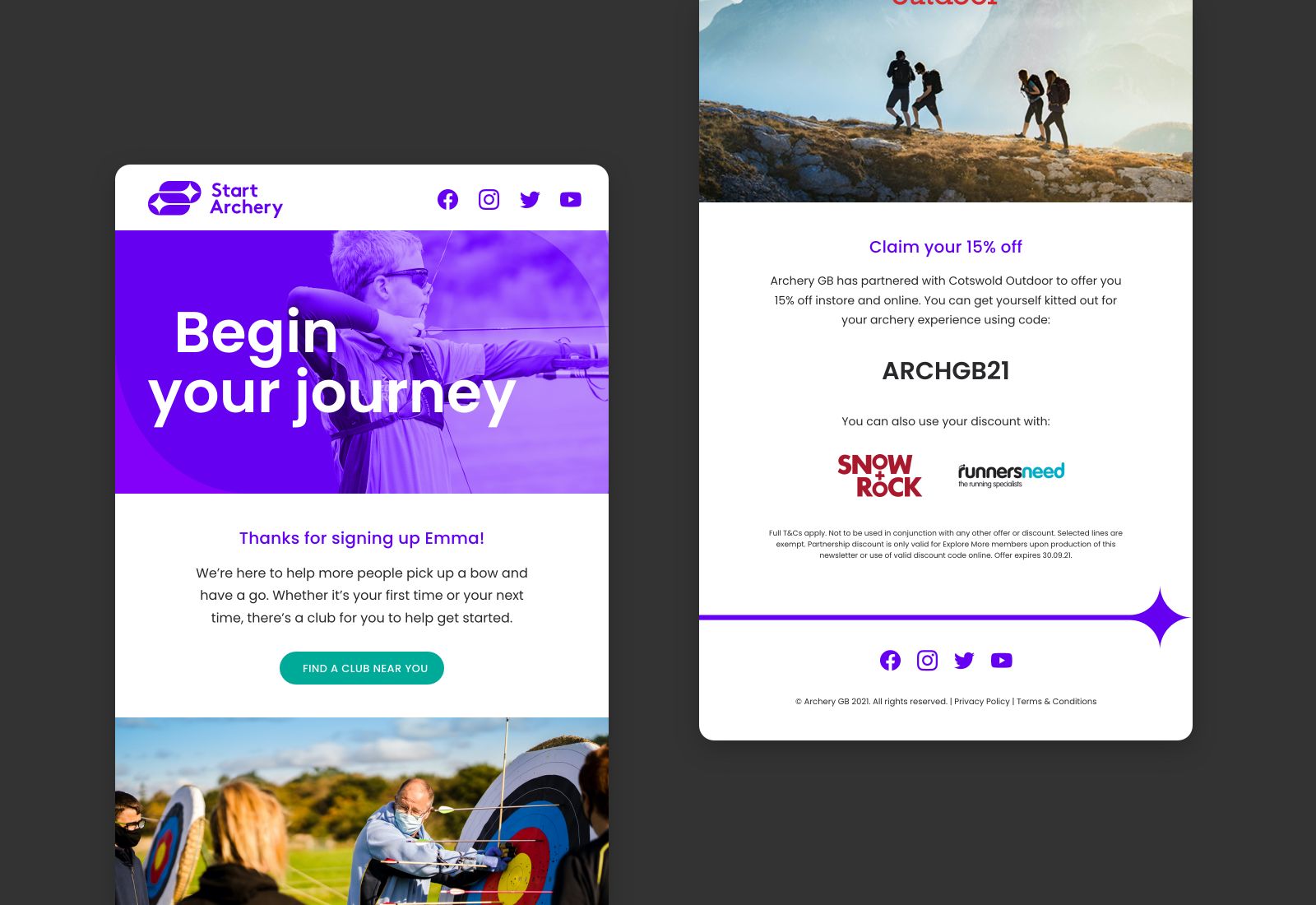
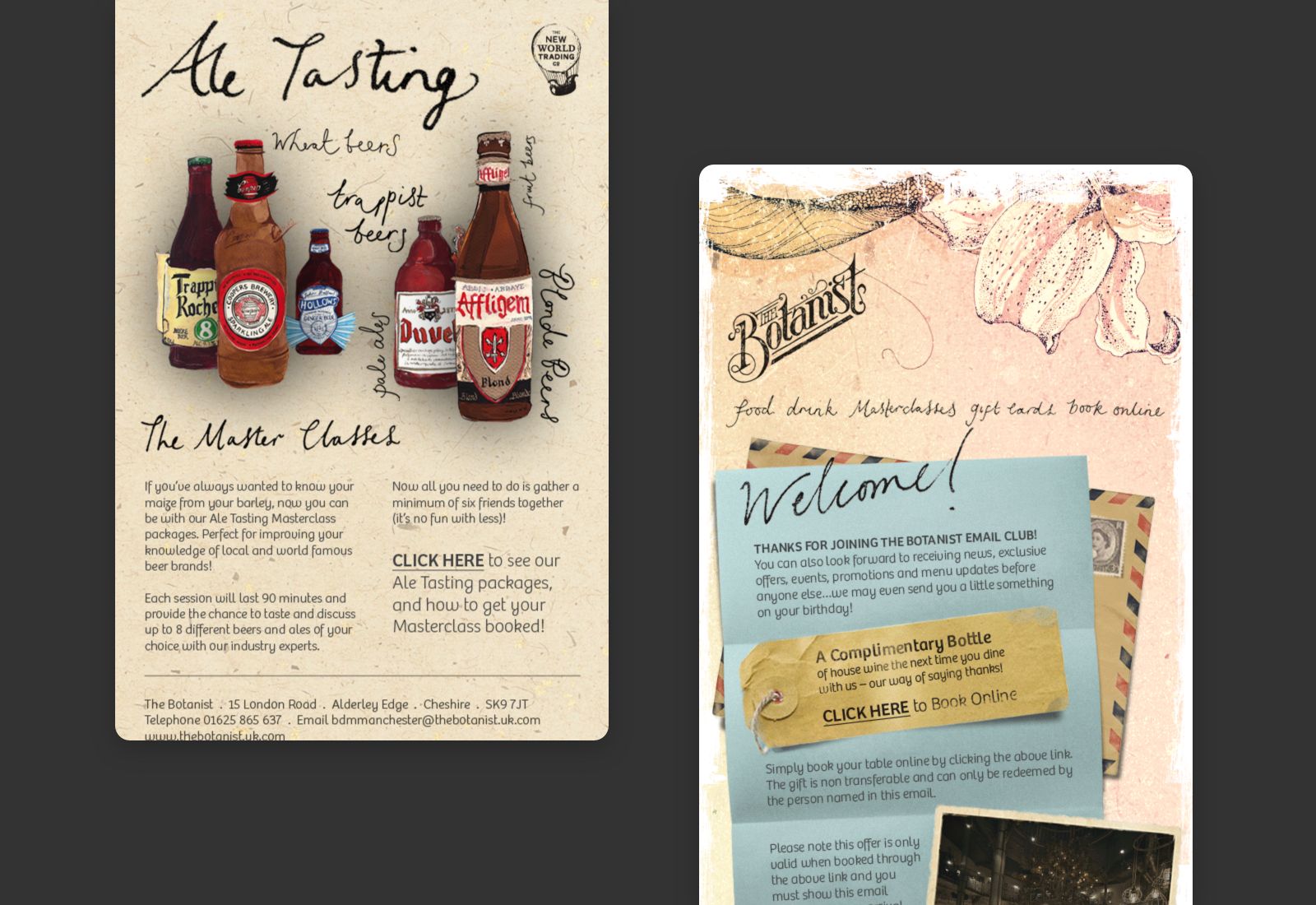
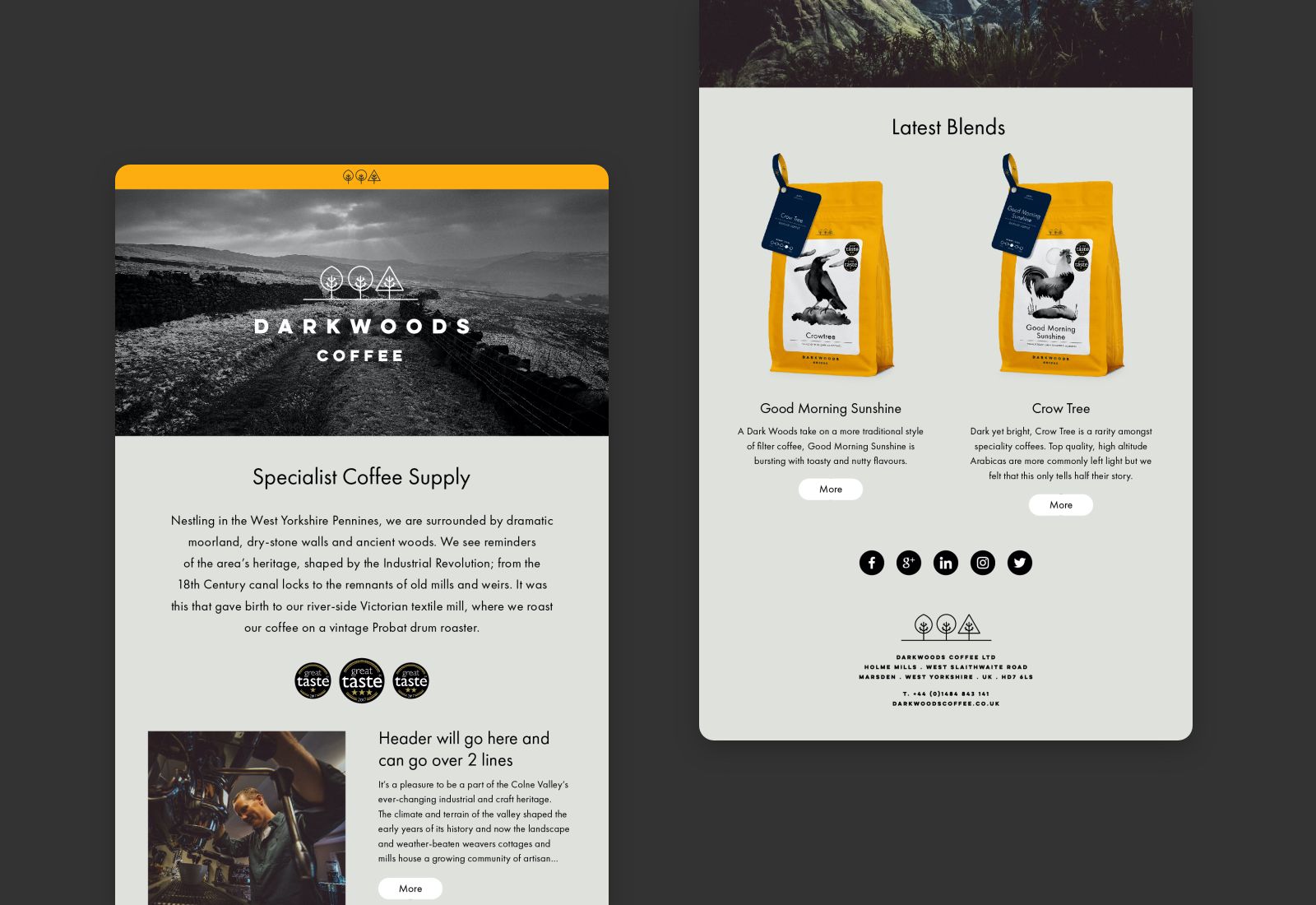
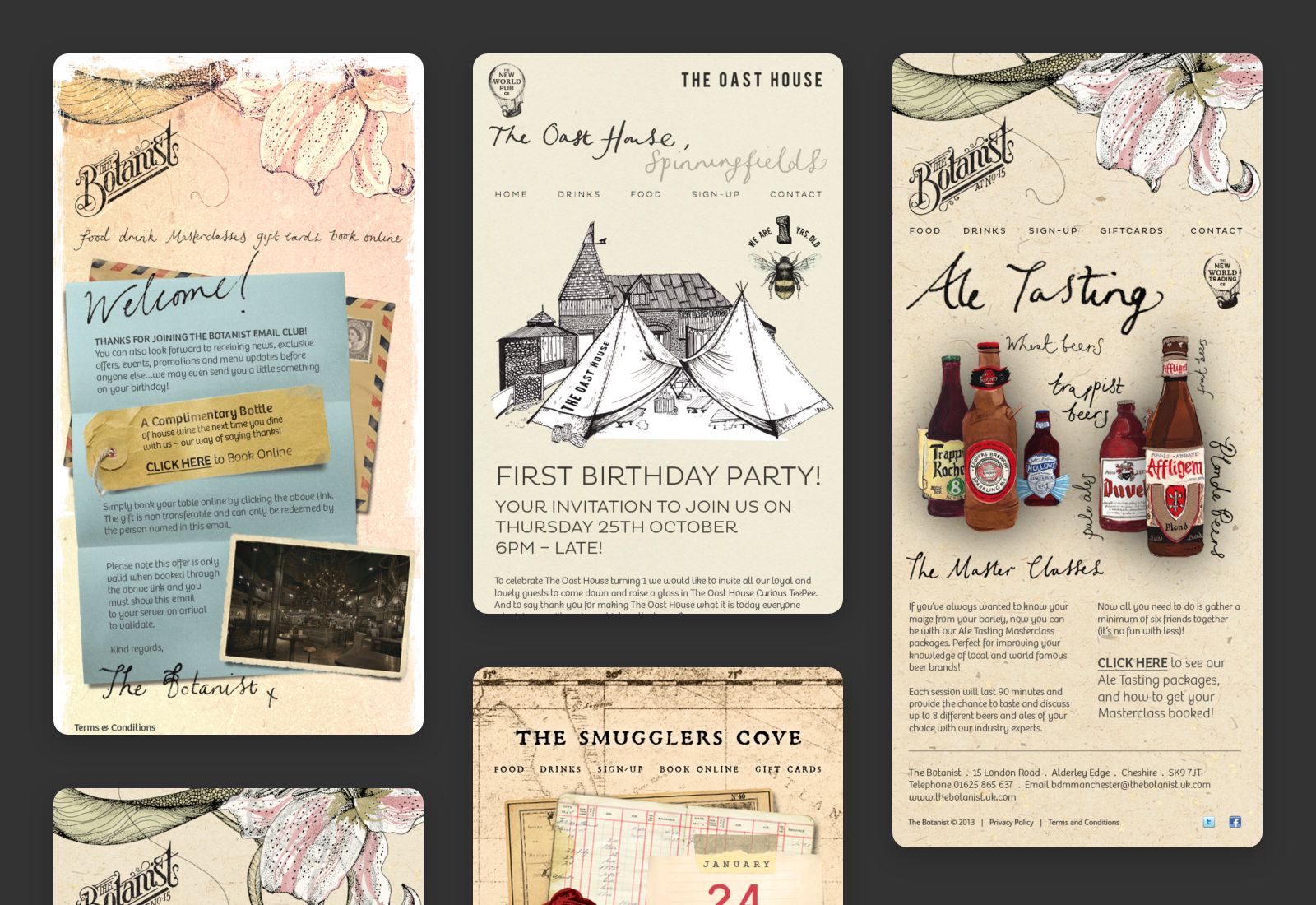
The 93ft ultimate guide to email marketing
The benefits of email marketing and actionable tips to get started. How to build and segment your list, which sequences you need and how to stay out of spam folders.
Email marketing is almost 40 times more effective in gaining new customers than Facebook and Twitter combined. Is your business making the most of it?
Email marketing is a highly effective digital marketing strategy. And, contrary to what some marketers would have you think, email is definitely alive and kicking - in fact, it’s stronger than ever. Despite video, artificial intelligence, bots and social media use being on the rise, this decades-old technology is still leader of the pack when it comes to connecting with your audience.
What is email marketing?
Any email sent to a customer or potential customer could be described as email marketing.
It’s a way to connect with your reader, build relationships, build brand awareness, increase engagement and make more sales.
It’s easy to think of email as being a one-to-many marketing tool but we like to think of it as one-to-one. Landing in someone’s inbox affords an intimacy that you don’t quite get when posting a tweet - so make the most of it by treating it like a personal conversation.
What are the benefits of email marketing?
Data shows that most people use email - with many having multiple accounts - and the figure is set to rise. When not everyone has active social media accounts, it makes sense to be where your customers are.
While social media is often a vital part of a business’ digital marketing strategy, algorithms mean that your posts don’t always show up where you want them to - or at all. 83% of emails make it to the inbox you intended them to, while the organic reach for an average Facebook post is just 5.2%.
It’s hard to argue with those statistics.
Email marketing also has the highest return on investment (ROI), with an average of between 3,800% and 4,400%. This means that for every £1 spent on email marketing, you could see £38-£44 return.
When is the best time to start email marketing?
The best time to start email marketing was as soon as you started your business - the second best time is now.
It’s never too early to begin building your email list and nurturing those relationships. Treat your list as a valuable source of potential revenue right from the start, whether you have 10 subscribers or 10,000.
How to get started with email marketing
First, choose your platform. There are a variety of email marketing platforms available for businesses, all offering a range of functionality at various price points. Most offer free versions which may be suitable for smaller businesses just starting out, but will charge above a certain number of subscribers.
Our advice is to make sure that you’re able to send automated and scheduled emails, and that A/B testing is possible, whichever package you choose.
Next, make it easy for people to join your list. A banner across the top of your website and a box in the footer work well, and social media profiles should make sign up easy to find.
Avoid pop ups that cover content as this is now one of Google’s pet hates - pop ups that appear when users are navigating away from your site are a good alternative.
Finally, make sure that there’s something to sign up to. If a subscriber signs up and doesn’t hear from you, it’s confusing for them - and a huge missed opportunity for your business. People are most happy to hear from you immediately after signing up, when their motivation to engage is high enough to make them take that leap to subscribe!
From your website user’s perspective, it takes effort to sign up to something… so reward their action by immediately adding value - then nurture and build the relationship.
How to build your email list
The average person receives over 120 emails per day, so getting them to agree to receiving another is a big ask.
When an individual hands over their email address, an exchange is being done. They agree to give you their details and invite your business into their inbox. You agree to provide them with more value than they can get by simply following you on social media or looking at your website.
What do we mean by value? Depending on your business, this might come in the form of a subscriber only discount - widespread in e-commerce; a whitepaper or ebook on a relevant topic, or first access to new product releases, events or courses.
Offering a reward in return for subscribing is known as lead generation, and while not every business uses these rewards, it’s definitely something to consider.
If you’re not offering specific rewards, what are you promising your subscribers to receive? Perhaps it’s regular How To guides, industry reports or other information relevant to both your business and your subscribers. You might offer a weekly or monthly round up of your blog posts or educational videos, or a combination of things that your subscribers are interested in.
If your business is in fashion you might offer outfit of the day advice (linking to your current line). If you’re in the wedding industry, guides on floral trends or honeymoon destinations will be relevant and well received by your subscribers.
Whatever you’re offering as a reward for signing up to your mailing list, make sure it’s clear. If people don’t know what they’re signing up to, they won’t sign up at all.
How to design your email subscriber journey
Taking a strategic approach to marketing is always a good idea, but with email marketing, it’s essential.
Plan your subscriber journey from the outset, in conjunction with your web design and marketing teams. How you make your plan - with user journey mapping tools, or going old school with Post-It notes - is up to you, but aim to answer the following questions:
What happens when a user arrives at your website? Where and when will they be presented with the opportunity to sign up? What do they see next? And what happens going forward?
Many businesses plan their subscriber journey for the first few days after sign up with an excellent welcome sequence, but neglect to think after this initial phase.
Segmentation is used to divide an email list into smaller segments based on specific criteria, in order to personalise the content they receive.
Personalisation is absolutely vital in email marketing. As we mentioned before, we think of email as a one-to-one marketing channel - a chance for your business to connect with one specific reader, directly into their inbox, at a time.
This is a great way to nurture that relationship and build brand loyalty - but it only works if everything you send to your subscribers is highly relevant.
Segmentation can be based on:
1. Customer demographics such as gender, location, age, family status. If you offer in-person services, marketing those to subscribers in a different country may not be the best plan. Similarly, if a subscriber doesn’t have children they probably won’t be interested in your new range of kids’ shoes.
2. Customer behaviour - whether they’ve bought from you yet, and what they bought. If you offer a range of products at vastly different price points, customers who’ve only ever bought your cheapest products may need a slower transition towards your high ticket items than those who’ve already purchased from the mid to high price range.
3. Content engagement - Which pages did they visit on your site? What did they click on? Which emails have they engaged with in the past? These behaviours give valuable clues as to what your subscribers want and need from you, which makes it easier to provide.
How to use automations and email sequences
Email sequences are a series of automated emails that are delivered to a customer/potential customer, triggered by a specific event or behaviour.
Remember to keep each email short and focused, with a clear call to action (CTA) - more on The Rule of 1 later.
Your email sequences will depend on your business but these five are relevant to most:
1. Welcome sequence - This is sent out whenever somebody subscribes to your list. The sequence should contain any rewards promised such as discount codes or free downloads, an introduction to your business, and business specific information such as your bestsellers, most read blogs or how to book/make an appointment/enquiry.
2. Onboarding sequence - When a customer buys a product from you or books a service they need to know: What happens next, what they can expect and any specific information they need to move forwards.This will include a confirmation email stating what they bought and the address it’s being sent to, or how to access if it’s a digital product. You might want to add how to use the product, or ways to gain extra value if that’s not immediately obvious. If you’re a service based business you’ll want to let them know what they need to do next. You’ll also want to suggest other items they might be interested in, plus link to where they can give feedback and leave reviews.
3. Abandoned cart sequence - According to Shopify, 60-80% of shopping carts are abandoned without the customer completing a sale. Over ? of those went on to buy after receiving an abandoned cart email - so if you’re not sending them, that’s a lot of money you’re leaving on the table. There’s any number of reasons why people don’t complete first time, for instance the site crashed, they forgot their payment details or they were just browsing. Some of these points are easily addressed with a simple “We’re still holding this for you” email while others may need to have some objections addressed before being ready to buy. Include reviews of the product they were interested in, or codes for free shipping to overcome these.
4. Repeat customer sequence - Acquiring new customers is 5 times more expensive than keeping the ones you already have. Of course you still need to give attention to attracting new business, but keeping the customers you have and turning them into loyal repeat customers should be a priority. Your repeat customer sequence could focus on similar products or upsells, special offers only available for repeat customers or loyalty/VIP memberships offering points for each product bought which can be exchanged for a free product down the line.
5. Re-engagement sequence - How many subscribers are on your list is much less important than how many are actually engaging. Database size really isn’t everything, what’s more important is who is opening your emails? Who clicks through, makes a purchase? When you have a large number of people on your list who aren’t engaging, the likelihood is that your emails will end up in Junk folders as Spam filters identify when recipients aren’t engaged - so keeping on top of your list housekeeping is wise.
Active Campaign suggests a 4 email re-engagement sequence comprising:
1. Reminder – A short message to let them know you’re still around.
2. Review – Give subscribers the opportunity to review their email preferences. Perhaps they only want a weekly round-up and not daily emails, or they want to opt out of hearing about certain products.
3. Receive – Offer a gift for staying subscribed, and make it clear in your subject line.
4. Regrets – If they’re still not engaging, now’s the time to unsubscribe them. They may open your email months later if it’s gone into a separate folder, so always include the link for them to re-subscribe if they want to.
Frequency - How often should I send an email?
How often to email is a big question, and one that many businesses struggle with. The fear is that too many emails will annoy or put off subscribers and lead to a high unsubscribe rate. Conversely, send emails too infrequently and you risk subscribers becoming disengaged between campaigns and therefore unsubscribing when you do finally email them.
So what’s the sweet spot? Campaign Monitor’s data suggests that an email every two weeks is a good middle ground, however in practice, it all depends on your audience and the content you’re sending.
For some businesses, an email several times a week, or even daily, is appropriate. For others, a longer message once a month is right for their subscribers. If you decide on a very high frequency, try allowing your subscribers to opt for weekly round ups instead.
As with all content marketing, consistency is key. Send your emails on the same date/day and at the same time so that your audience knows when they can expect to hear from you.
How to measure success in your email marketing campaign
There are many ways to measure the success of your email marketing campaign, but first you need to set your goals. Your goals might include:
1. Brand awareness.
2. Driving traffic to your website.
3. Increasing customer engagement.
4. Increasing sales.
When your goals are clear you can set your key performance indicators (KPIs) - metrics which indicate whether you’re meeting your goals, how your campaigns are performing and what ROI you’re achieving.
Common KPIs in email marketing are:
1. Deliverability - How many emails arrive in their intended inbox.
2. Open rate - How many subscribers opened your email. The average open rate across all industries is 18%.
3. Click through rate - How many people clicked on a link in your emails. Across industries the average CTR is 2.6%.
4. Conversion rate - How many people fulfill the goal of your campaign. The average conversion rate is around 15%.
5. Unsubscribe rate - How many people unsubscribe from your list. The average is 0.1%.
Make time to regularly analyse the figures and take action as needed. If your deliverability rate is high, but open rates are low, work on your subject lines and ensure that the content is relevant to your audience. If open rates are high but click through is low, is there a clear call to action? Is the task you want your reader to perform clear and easy to follow?
Even when your campaigns are performing well, A/B testing - also known as split testing - helps further refine and perfect your strategy. This involves sending one variation to a random section of your list or segment, and another variation to another random section. The variation that performs better will then automatically be sent to the remainder of your list.
A/B testing can be used to test everything from subject lines and call to action buttons to entire email templates.
Knowing your customers is the key to any successful marketing campaign and by keeping a firm eye on your KPIs and regularly A/B testing, you’ll get to know exactly what yours want and need.
Design, copy and content - What should your emails actually say?
Email copy
A Litmus study found that the sender name is actually more important for open rates than the subject line, as that’s what most (42% of) people look at first. Sender names should be “trustworthy, easily recognised, consistent, and segmented.”
Unless you’re a personal brand and your business is you, avoid using just a first name, as your readers won’t know who you are. Using the company name is fine, or you can use “Name at Company Name”, making it both personal - the email is from a real person - and recognisable - it’s clear that it’s from your company. Never use “Do Not Reply”!
After the sender name, the next hurdle you need to clear is the subject line. A great subject line:
1. Creates a sense of urgency.
2. Sparks the reader’s curiosity.
3. Has key terms at the beginning to avoid being cut off on a small screen.
4. Is short and snappy.
Using first names in the subject line can potentially improve open rates by around 2%, but don’t overdo it. A variation on “Hi Jane, have you read our new blog post?” gets old pretty quickly, however sending discount codes on subscribers’ birthdays with the subject line “Happy Birthday Jane, enjoy your gift” could be an effective way of using personalisation.
Preview text is the snippet of text you see after the subject line. This often defaults to “View email in browser” so make sure you change yours to make the most of this prime real estate! As preview text isn’t shown on every platform, don’t include any vital information. Preview text should “complement not complete”.
Email design
Email design, like the design of your website, is vital for a cohesive brand experience. Just as your visitors should be able to tell they’re on your site even if they can’t see your logo, they should know they’re reading an email from you simply by the way it looks and feels. Branding, including colour and logos, should be strong and instantly recognisable as you.
Depending on the font your brand uses, not all email platforms will support it. If your email contains a font that’s not supported a fallback font will be used instead, affecting the way your reader experiences your email. To get around this and stay in control of the user experience, we recommend using web safe fonts - fonts which all email platforms support.
Web safe fonts include:
1. Arial
2. Verdana
3. Georgia
4. Times New Roman
5. Courier
93ft advise our clients on the best font for their brand.
Templates can be a great addition to your email marketing toolkit. HTML templates that you or your team can edit in-house makes sending a new campaign quick as easy, however many brands prefer fully bespoke emails. 93ft can provide you with a template or can support you with bespoke designs when you need them.
As mobile users account for over 50% of email opens - a figure which is predicted to rise - responsive design becomes a crucial part of your email marketing strategy. Responsive design is what allows images, graphs and other content to shrink or grow to fit the screen the email is opened on. This avoids having half an image cut off, or the reader having to scroll across to find the button they need to click.
Using visuals such as photos, illustrations and even animated GIFs can be a great way to add interest to your email and create something beautiful - as long as they’re relevant to the tone of your message and overall brand.
E-commerce brands will want to include images of their products, but service based businesses can use visuals as well. Make sure you use smaller file sizes to avoid impacting email load time, and don’t forget about the alt text so that people using screen readers can enjoy your content.
The main event is the body of the email, so what should you actually be sending to your list?
Again, this very much depends on your business and your audience, but here’s a few ideas:
1. New products.
2. New services or packages you offer.
3. How To guides, tips and tricks, information and education.
4. Abridged versions of your latest blogs or articles, with the link to read the full post on your website.
5. Behind the scenes of your business - especially if you’re in a creative industry.
6. Roundup of industry news.
7. Industry reports.
8. Special offers or subscriber discounts.
9. News about your business - as long as it’s genuinely relevant to your reader.
There is no definitive guide to word count in email - like many aspects of marketing it depends on your business and your audience. Knowing what your audience wants and needs - a short email, filled with images but very little copy, a copy only missive, or anything in between - is the foundation to your email marketing campaign.
Testing your emails before you send them to ensure that links work and content displays correctly is absolutely vital, as is having the copy proofread. Somehow spelling mistakes that weren’t picked up in-house become glaringly obvious immediately after pressing send, and poor spelling can actually harm sales.
SEO (search engine optimisation) doesn’t directly apply when it comes to email, however if you’re planning to repurpose email content into blog posts - a great way to get the most bang for your buck from your content marketing plan - it can be helpful to consider SEO from the start.
How to use the ‘Rule of 1’ in your email marketing
This could come under the previous section, but it’s so important it really deserves its own. To keep all of your emails focused and to the point - therefore optimising its chances of being opened and acted upon - remember the Rule of 1.
Each email should have:
1. One reader in mind.
2. One message.
3. One call to action.
When you include too many messages or ask your reader to complete too many tasks, you add confusion and they will end up with decision making paralysis aka, they end up doing nothing. If you want your reader to follow you on social media, buy your new product, read your blog post and leave a review - make that four separate emails.
Email marketing best practice - how to stay off the spam lists
General Data Protection Regulation (GDPR) is covered under the Data Protection Act of 2018. Anyone in possession of personal data - e.g customer names and email addresses - must follow strict rules called ‘data protection principles’.
Among other stipulations, you must make sure the information is:
1. Used fairly, lawfully and transparently.
2. Used for specified, explicit purposes.
3. Kept for no longer than is necessary.
For email marketing purposes, this means that you can only contact people if they have either specifically consented, or if they have bought from you in the past and did not opt out of being contacted. The option to unsubscribe or opt out of further communications must be clearly presented in every email.
Companies who don’t comply with GDPR can be fined up to £17.5 million, or 4% of global annual turnover, whichever is greater.
Legal requirements aside, keeping out of your subscribers’ spam folders should be a priority. A high number of spam complaints can lead to your IP being blacklisted - meaning that none of your emails will be delivered. This is where knowing your audience and keeping campaigns ultra relevant is so important.
Even messages that are entirely relevant can end up in the Spam folder, though. Spam filters are triggered by certain words, which can unwittingly be used by email marketers.
While some are common sense - you probably won’t be mentioning lottery wins or magical weight loss solutions - others, such as “quote” or “50% off” could easily be used innocently. Hubspot has a great round up of words and phrases to avoid, here.
Your 12 point email marketing checklist
1. Choose your email service provider. Make sure it has the functionality you need, such as the ability to segment, split test and send automated sequences.
2. Decide on lead generation, such as a free report or subscriber discount. Make sure it’s clear at sign up what your subscribers will receive.
3. Decide on clear goals and develop your KPIs from there. Set regular times to review these and adjust your strategy accordingly.
4. Ensure that your subscribers have something to sign up to. Design your subscriber journey and get your welcome sequence in place before you add a signup form to your site.
5. Set your email schedule based on your customers’ preferences and what makes sense for your business.
6. Make your sender name recognisable, your subject lines relevant and enticing and your imagery on brand.
7. Always remember the rule of 1 - each email needs 1 reader, 1 message and 1 clear call to action.
8. Great design is just as important in email as it is on your website. Ensure your branding is strong and recognisable.
9. Always test emails before pressing “go” on a campaign.
10. Keep GDPR in mind and make it easy to opt out or unsubscribe.
11. Be aware of spam filters and language to avoid.
12. Constantly re-evaluate. Use A/B testing, KPI metrics and customer feedback to optimise your email marketing strategy.
93ft’s marketing and copywriting team, along with our designers and branding experts, can help your business start email marketing - or take it to the next level.
To find out how, just get in touch.
Latest Ideas & Insights

93 Features – Marketing for growth, reducing your spend and increasing your impact
For the latest 93 Features event, we were joined by James and Becs from Kokopelli for a comprehensive look at funnel strength, the importance of advocacy, and turning your biggest weakness into your biggest opportunity.
Find out more

Creative Internships with 93ft Design Studio
Incubating fresh talent, supporting creative individuals and expanding the 93ft team
Find out more

93 features SEO - 5 things you can do today to boost your website’s SEO, improve brand awareness, visibility and sales.
Discover what happened when local Sheffield businesses joined 93's SEO specialist at The Mowbray for a SEO training and networking event.
Find out more

How to achieve a traditional shopfront design aesthetic
There are many methods to consider when it comes to crafting a traditional and modern heritage shopfront design aesthetic. From lighting, ironmongery, decoration and paint, discover how our design studio is bringing life back to heritage shopfronts.
Find out more












